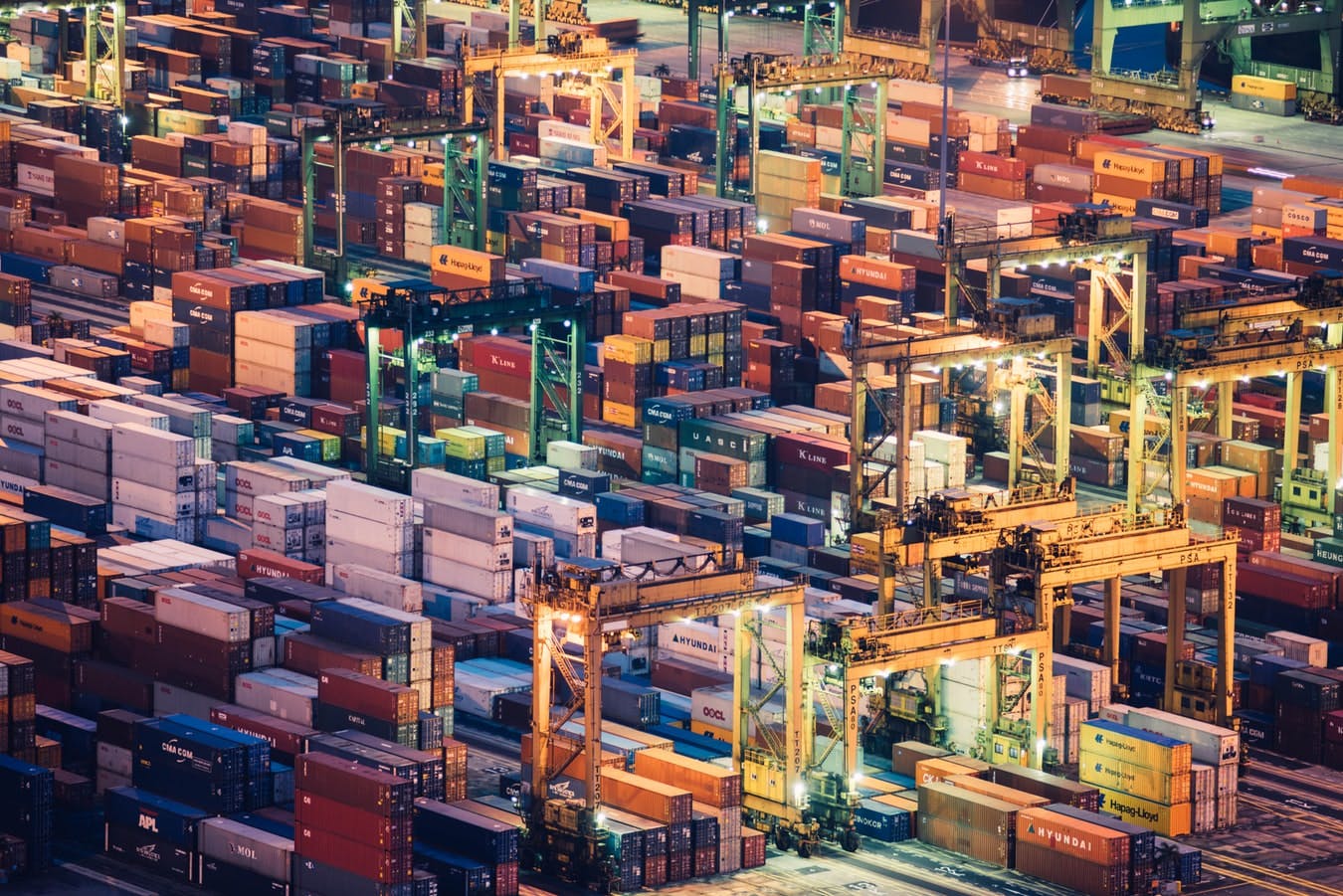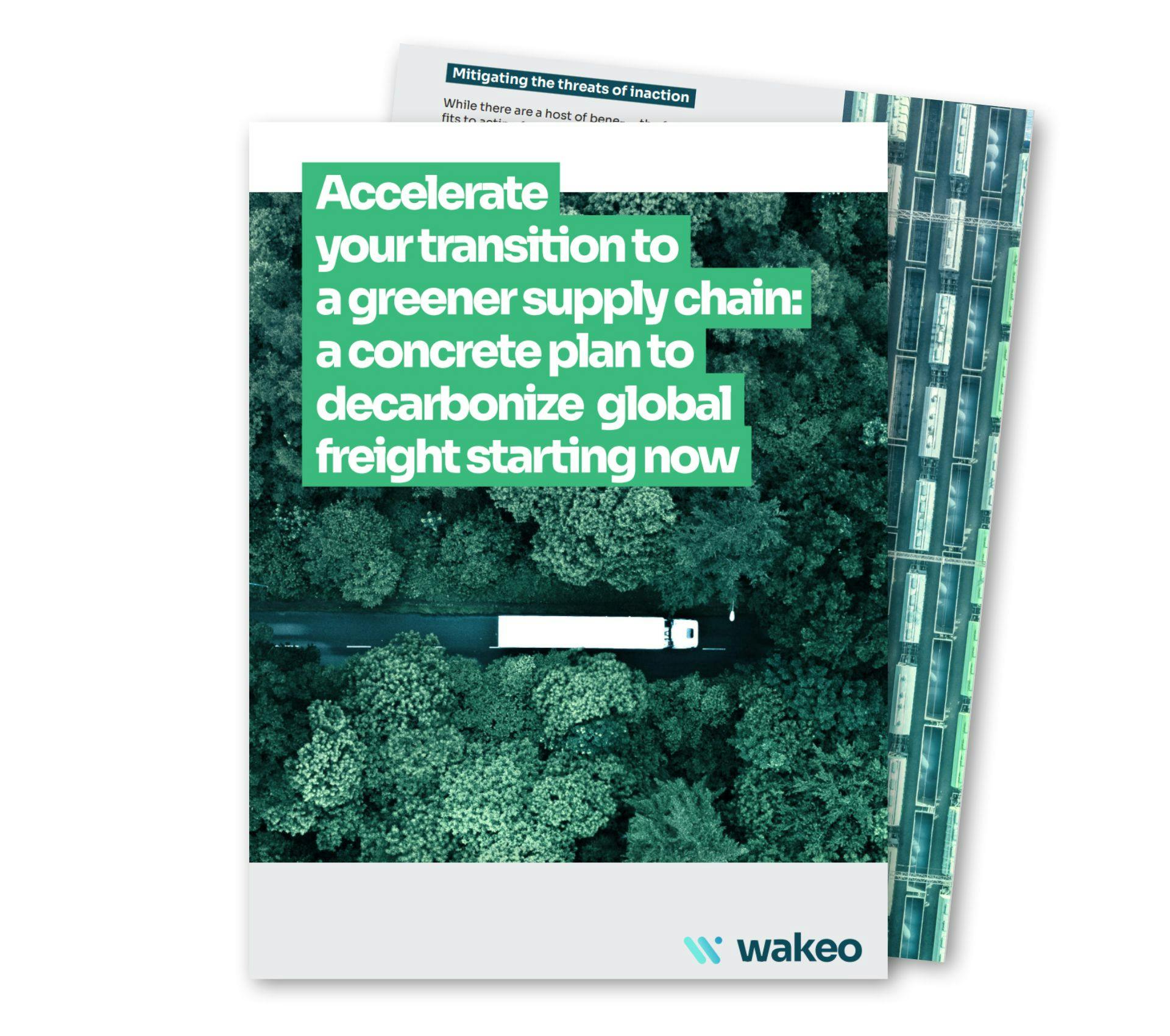Jan 14, 2026 Webinar | Global Supply Chain Architecture: Examining Red Sea’s Evolving Impact - Register Now

Decarbonizing global freight: 4 concrete actions for shippers to reduce scope 3 emissions
Transportation, particularly freight, plays a significant role in contributing to global greenhouse gas (GHG) emissions, accounting for an estimated 17% of total emissions. To combat this, decarbonizing global freight is an essential effort in the fight against climate change.
However, addressing this challenge is not a simple task and requires a collective effort from various stakeholders, including shippers. By implementing practical and effective solutions, substantial progress can be made towards a sustainable future for freight transportation.
1. Optimize the fill ratio of containers
Freight-forwarders and shippers can significantly reduce their per tonne GHG emissions and transport costs by improving container fill ratios. A change in Incoterms is one method to achieve this.
Another method to increase fill ratios is to bulk-fill a container as opposed to using non-stackable pallets. This can increase usable volume from on average 43% to 78%, and increase efficiency by on average 69%, ultimately resulting in the need to ship fewer containers, with substantial cost and environmental savings.
In many instances, containers are poorly optimized because data on weight and volume is not available in real-time. Simply having access to this information can improve utilization by several percent.
2. Consolidate shipments
Consolidating shipments is another way to decarbonize freight. It does not only reduces the number of shipments but also allows more efficient use of transport resources.
One freight forwarder shared with us that, the way in which transportation is organized by suppliers can greatly impact a company's ability to decarbonize their supply chain. If the supplier is responsible for organizing transportation, they are unlikely to consolidate shipments with other suppliers. However, by reversing the Incoterm and taking control of shipment orchestration, companies have the opportunity to make greener transportation choices and optimize container loads through consolidation warehouses. In this way, the terms agreed upon in sales and legal agreements can have a significant influence on a company's decarbonization efforts.
This likely requires the shipper to wait longer before their goods are sent, which can result in an increase in frozen cash, but better visibility of inventory levels through digital tools can help to support this decision. Information flow plays a decisive role, enabling more efficient digital booking processes that can group multiple separate shipments into one consolidated shipment with less empty mileage.

3. Accurately measure GHG emissions
An organization can’t manage what it isn’t measuring. Accurate data collection on GHG emissions is critical to reducing transport emissions, quantifying where the greatest impacts lie and where attention should be focused.
Once baseline data has been established, actions and subsequent improvements can be measured against this to show how an organization is progressing on its path to decarbonization. These can be related back to the high level commitments made by top management, helping to avoid the risk of greenwashing.
The majority of businesses calculating their scope 3 emissions currently use average emission factors in the form of standard datasets, such as those provided by the GLEC Framework. This allows for a top-level overview of supply chain GHG emissions, but as the management consulting firm McKinsey & Company states, “In the world of financial accounting, this level of approximation would be the equivalent of companies using average industry costs and revenues to prepare their annual financial statements.”
Default emission factors do not account for the exact route that the goods took, the operational practices of the carrier, the vehicle or vessel type, the fuel used, or the weight of the load, resulting in often vast discrepancies.
A road transport carrier shared their insight with us that, accurately measuring the effectiveness of decarbonization efforts becomes challenging when the measures are not a change in mode of transportation or a reduction in transport volume, as standard averages are unable to capture the impact. For instance, the default data for GHG emissions from a 40 tone truck in Europe may assume standard fuel consumption and utilization levels, but actual figures could vary by as much as 50% due to differences in utilization and fuel consumption, as supported by studies.
Accurate GHG emissions data that relates to actual shipments gives businesses greater transparency into the exact carbon cost of their freight transport operations, allowing for potential savings from decarbonization actions to be more easily quantified.
4. Educate and engage to take others with you
It is important for leaders to educate and engage with their teams and their supply chain, so that sustainable actions are taken at every level. When the necessary time, energy and resources are invested into educating others of the value of sustainability, a multiplier effect can be created to exponentially reduce freight transport’s environmental impacts and facilitate deep decarbonization.
Sustainability can only become embedded in an organization's culture when employees are engaged in the improvements that are being made.
"A lot of top management made high commitments to reduce emissions, but now we need results. Transport teams are front and center in these efforts, and technology has a crucial role to play.” - Julien Cote, CEO, Wakeo
For businesses with material scope 3 transport emissions, it will become vital to engage with carriers, since the operational improvements will have to come from them. Setting procurement standards is one of the most powerful levers to address transport emissions, and companies can look to introduce sustainability metrics into their tendering processes.
A logistics supply chain may extend into hundreds of carriers when road freight transport is included, and it would not be possible to engage directly with all of these. Instead, by measuring real GHG emissions, organizations can identify the tier 1 carriers that are responsible for the bulk of their CO2 emissions and work to engage with them to find the most impactful solutions.
For many businesses, investing in deep decarbonization without long-term commercial guarantees can be a significant upfront investment and risk. Forming buying groups can successfully prove the market’s willingness to invest in these improvements.
Decarbonizing the transport industry requires a concerted effort from all stakeholders. Collaboration is crucial in our path to decarbonization as it brings together multiple stakeholders with different perspectives and expertise to address complex challenges and find solutions that are more effective and efficient. By working together, we do not only achieve greater progress in reducing emissions, but also create a more sustainable and greener future for all.
To gain more valuable insights on decarbonizing the freight industry, download our latest white paper to know how to decarbonize your supply chain starting now. Don't miss the chance to stay ahead in the race for a greener future!
